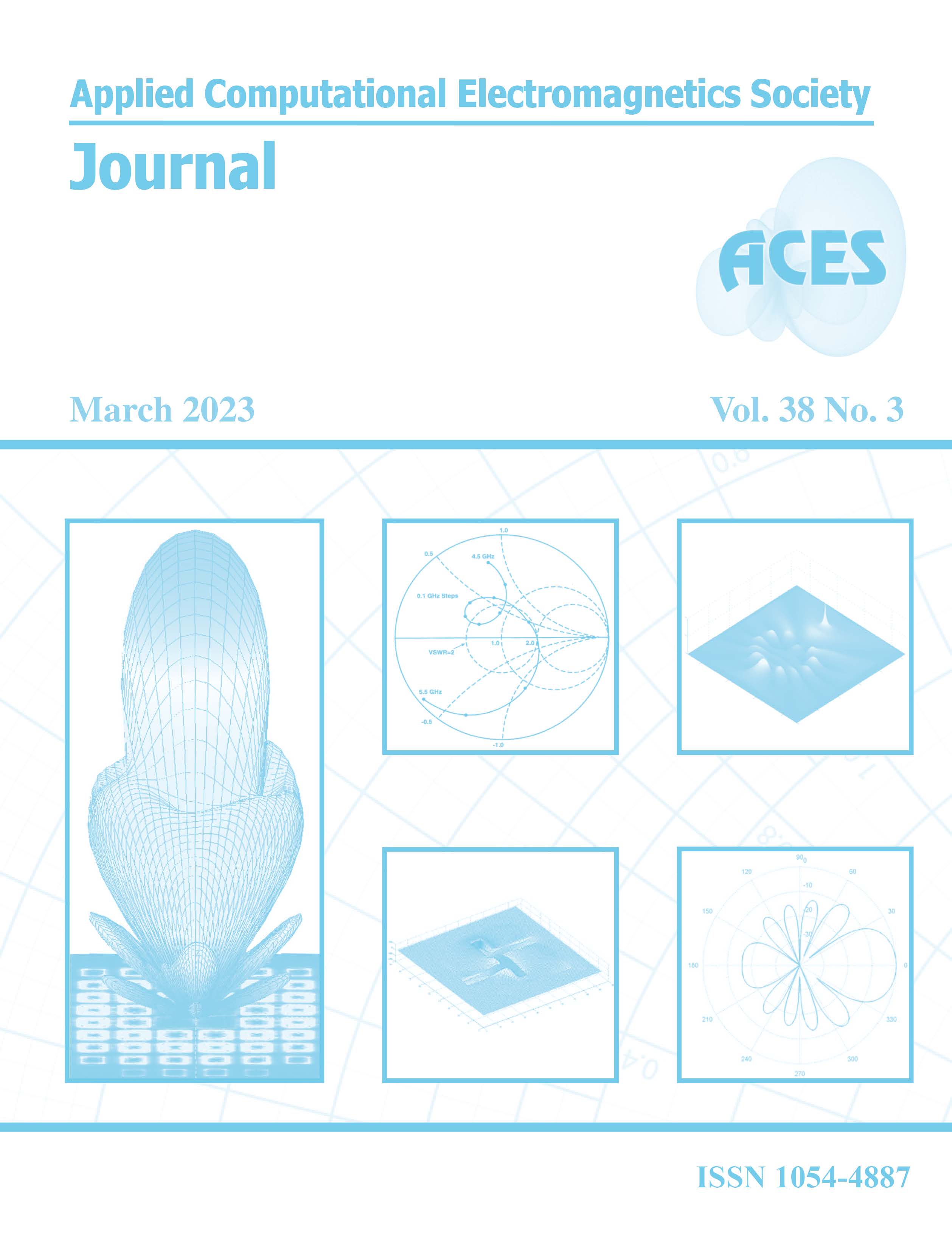Research on the Electromagnetic Emission Along the Contact Line of Electrified Trains Passing Through Neutral Sections
DOI:
https://doi.org/10.13052/2023.ACES.J.380302Keywords:
electrified high-speed railway, electromagnetic emission, electromagnetic environment test, transmission line theoryAbstract
To study the electromagnetic emission along a contact line when an electrified high-speed train passes through a neutral section, this paper models the transmission line of the traction network, provides a calculation method and boundary conditions for the parameters of the model, solves for the current distribution along the contact line, and calculates the electromagnetic emission of the contact line considering the antenna effect. Thus, the electromagnetic emission characteristics along the electrified railway are determined. Moreover, the actual electromagnetic emissions of a train passing through a neutral section are measured with a field test method and compared with the calculation results to verify the effectiveness of the model.
Downloads
References
Y. Xiaojia, Z. Feng, and Q. Riqiang, “Radiation characteristics of pantograph-catenary arc and its influence on airport glide beacon,” Acta Aeronautica et Astronautica Sinica, vol. 39, no. 1 pp. 253-260, 2018.
Y. Jiabin, Z. Feng, and L. Jun, “Electromagnetic interference measurement and analysis of high-speed electric multiple units speed sensor,” Journal of Electronic Measurement and Instrumentation, vol. 29, no. 3, pp. 433-438, 2015.
Z. Feng, T. Yutao, and G. Chenxuan, “Mechanism and suppression of electromagnetic interference of pantograph-catenary arc to speed sensor of CRH380BL electric multiple unit,” China Railway Science, vol. 37, no. 6, pp. 69-74, 2016.
H. Lu, F. Zhu, and Q. Liu, “Suppression of cable overvoltage in a high-speed electric multiple units system,” IEEE Transactions on Electromagnetic Compatibility, vol. 61, no. 2, pp. 361-371, 2019.
L. Hede, Z. Feng, and L. Xin, “Shielding effectiveness of reinforced concrete toward electric arcs in pantograph-catenary systems of metro,” Chinese Journal of Radio Science, vol. 31, no. 6, pp. 1209-1215, 2016.
S. Midya, D. Bormann, and A. Larsson, “Understanding pantograph arcing in electrified railways-influence of various parameters,” 2008 IEEE International Symposium on Electromagnetic Compatibility, Detroit, MI, USA, pp. 1-6, 2008.
S. Midya, D. Bormann, and T. Schutte, “Pantograph arcing in electrified railways—mechanism and influence of various parameters—part II: with AC traction power supply,” IEEE Transactions on Power Delivery, vol. 24, no. 4, pp. 1940-1950, 2009.
Y. Wang, Z. Liu, and X. Mu, “An extended Habedank’s equation-based EMTP model of pantograph arcing considering pantograph-catenary interactions and train speeds,” IEEE Transactions on Power Delivery, vol. 31, no. 3, pp. 1186-1194,2016.
J. L. Guardado, S. G. Maximov, and E. Melgoza, “An improved arc model before current zero based on the combined Mayr and Cassie arc models,” IEEE Transactions on Power Delivery, vol. 20, no. 1, pp. 138-142, 2005.
B. Tellini, M. Macucci, and R. Giannetti, “Conducted and radiated interference measurements in the line-pantograph system,” IEEE Transactions on Instrumentation and Measurement, vol. 50, no. 6, pp. 1661-1664, 2001.
Y. Wang, Z. Liu, and X. Mu, “Research on electromagnetic transient process in articulated split-phase insulator of high-speed railway considering viaduct’s electrical coupling,” International Transactions on Electrical Energy Systems, vol. 27, no. 4, 2017.
K. Huang, Z. Liu, and Y. Wang, “Analysis of optimal body grounding technology in case of electric multiple unit passing neutral section device,” Proceedings of the CSU-EPSA, vol. 28, no. 5, pp. 1-8,2016.
L. Xin, “Pantograph arcing electromagnetic radiation model of high-speed train passing electric phase separation and its typical application analysis,” Ph.D. dissertation, Southwest Jiaotong University, Chengdu, China, 2019.
W. Ying, L. Zhigang, and M. Xiuqing, “Study on pantograph-catenary system temperature field of high-speed railway under off-line arc conditions,” Computer Simulation, vol. 32, no. 7, pp. 154-159, 2015.
L. Hongmin, Y. Zhiyong, and L. Wanyu, Engineering Electromagnetic Compatibility, Xi’an, China: Xidian University Press, pp. 160-162, 2010.
F. M. Tesche, M. V. Ianoz, and T. Karlsson, EMC Analysis Methods and Computational Models, New York, NY, USA: Wiley, 1997.
C. R. Paul, Analysis of Multiconductor Transmission lines, 2nd
ed., New York, NY, USA: Wiley, 2009.
W. Ying, “Studies on the heat distribution and current conduction of pantograph-catenary electric contact and their influence laws,” Ph.D. dissertation, Southwest Jiaotong University, Chengdu, China, 2015.
Railway applications-Electromagnetic compatibility-Part 2: Emission of the whole railway system to the outside world, GB/T 24338-2, Ministry of Railways, PRC, China Standards Press, Beijing, 2018.




